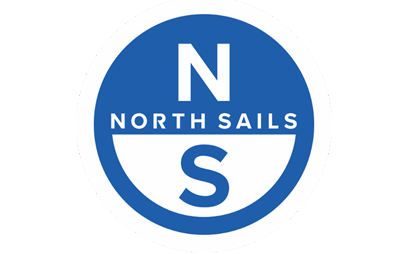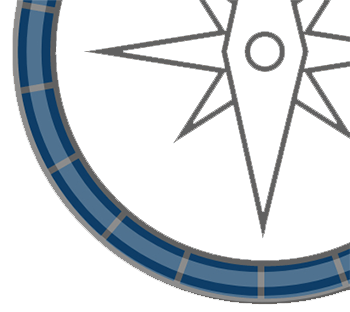
Miranda steps up
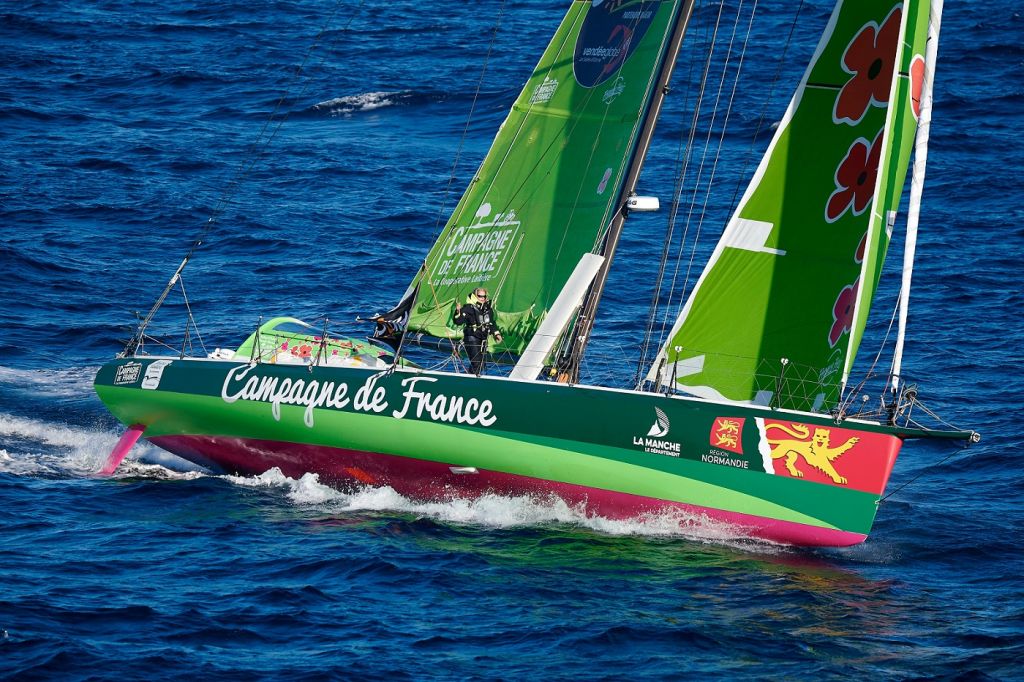

For those of us fortunate enough to know RORC member Miranda Merron, her entry in this year’s Vendée Globe came as a great surprise.
Over the course of at least a decade she has become a pillar of the Class40. With her partner, French sailing legend Halvard Mabire, she has competed in pretty much every race the Class40 has to offer. Mabire in fact is the Class40 President and even designed their last boat. Aboard that Campagne de France (#147), they competed in most of the Class40 calendar, but also numerous RORC races, including the 2017 and 2019 RORC Caribbean 600s, the Rolex Fastnet Race and Sevenstar Round Britain and Ireland Race. Simply, the IMOCA class never seemed on the cards.
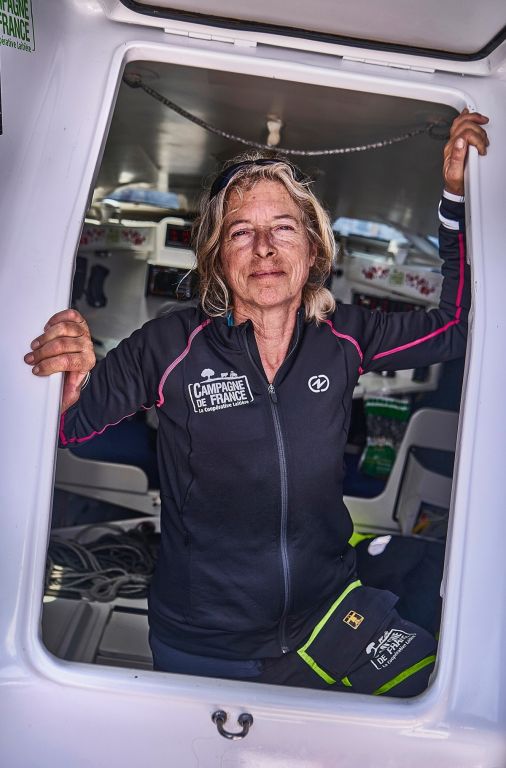 Miranda Merron © Bertrand Duquenne Photography
Miranda Merron © Bertrand Duquenne Photography
But as Merron recounts, there was method behind this present madness: “We signed for another two years of sponsorship with Campagne de France and I felt that because we’d already been in the Class40 for 12 years that I should have a crack at Class40 round the world record. Our last Class40, 147 was the perfect boat for that, but Halvard said ‘you’ll spend a long time by yourself, it will be an incredible sporting achievement, but for a bit more we can do the Vendée Globe’. So we don’t have the money, but here we are!”
There was also the safety aspect – being part of a race means there is more chance of rescue should disaster strike and a 60-footer is also a more ‘comfortable’ size for prolonged big ocean sailing than a Class40. “Last time I was down there was on 101, our first Class40 and crossing the Indian Ocean, there was a stage where it was behaving very ‘Indian Ocean-like’. For sure we were safe, but in a 60-footer you are better protected, you are higher on the water etc. Although I think Class40s should be racing around the planet.”
Recently their campaign’s financial shortfall has been reduced thanks to support from both Region Normandie and the La Manche department. Merron and Mabire live in Barneville-Carteret, about 12km south of Cherbourg in Normandy and while Mabire is perhaps the second most well known Norman after William the Conqueror, Merron reckons that after living there for so many years she too has been adopted by the French region. Hers is the only IMOCA from Normandy competing in this Vendée Globe.
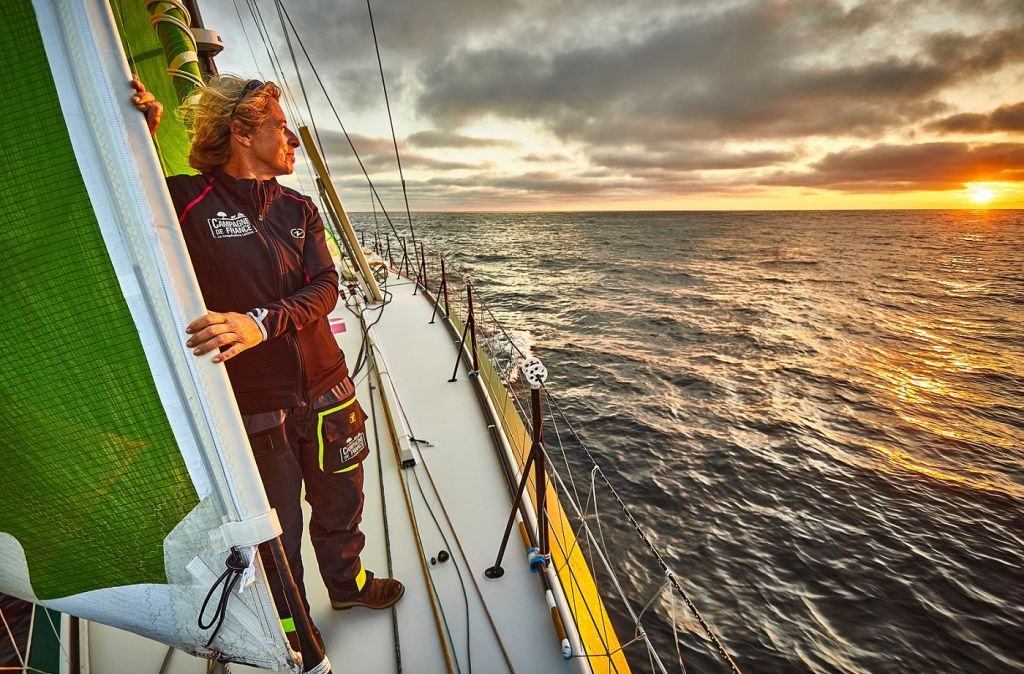 Miranda on Campagne de France © Bertrand Duquenne Photography
Miranda on Campagne de France © Bertrand Duquenne Photography
Her sponsor Campagne de France may sound like it is wider reaching, but in fact is very Norman too. This giant diary co-operative of 751 family-owned dairy farms spread across the La Manche department is headquartered 5km south of Cherbourg.
While Merron doesn’t have the same hours in IMOCAs as her compatriot Sam Davies, she has raced them a lot. She was part of Dee Caffari’s Aviva crew when they set a record Round Britain in 2009 and she even raced UUDS, once Alain Gautier’s 1992-93 Vendée Globe winner Bagages Superior, in the 2002 Route du Rhum, her first solo race (at the time her Pindar-backed racing partner Emma Richards (Sanderson) was off sailing solo around the world in Around Alone). Mabire also has IMOCA ‘previous’ having successfully developed and campaigned the good looking, vibrant red Ville de Cherbourg, albeit back in the early 1990s.
She also has experience of the Southern Ocean, originally as part of Tracy Edwards’ career-making Royal & Sun Alliance campaign for the Jules Verne Trophy in 1998 and then as navigator for fellow Hamble-ite Lisa Macdonald aboard Amer Sport Too in the 2001-02 Volvo Ocean Race. Then in 2011-12 she and Mabire completed the first half of the Class40’s Global Ocean Race.
Given that she is effectively carrying out a Vendée Globe with a Class40 budget, Merron’s campaign is at the lower end of the budgetary spectrum. She has acquired as her new Campagne de France the old Temenos, a 2006 vintage Owen-Clarke design, built by Southern Ocean Marine in New Zealand originally for experienced Swiss ocean racer and a Whitbread contemporary of Mabire’s, Dominique Wavre. The boat is the same generation as, but more ‘belt and braces’ than, Mike Golding’s Ecover and Dee Caffari’s Aviva. Wavre was forced to retire from the 2008 Vendée Globe, but four years later under the new colours of Mirabaud brought her home seventh in a very respectable time of 90d 3h 14d 42m. In 2012 under skipper Rich Wilson she went around again as Great American IV in a more leisurely 107 days.
Wavre believed that sail area is king and so in her day the boat had by far the tallest ‘classic’ rig in the fleet, a configuration she has to this day, albeit with a new spar from 2011. “It is way too tall. In an ideal world, if we had had the money, we would have lopped a metre or more off it,” Merron admits.
It also comes from the generation of IMOCA that were literally water tankers. While classic pre-canting keel IMOCAs held water ballast in outboard tanks, by 2008 when all new boats had canting keels, water ballast was held in a series of centreline tanks. And there was a lot of it! It was used partially for righting moment but also to adjust the boat’s fore and aft trim (but also to cheat the ancient IMOCA class’ rule – that a boat should heel by no more than 10° with all movable ballast deployed – filling the water ballast tanks effectively sunk the boat, provided more hull form stability, etc). Thus on each tack up to five tonnes of water (ie more than half the boat’s total displacement) can in theory be pumped on board. 12 years on and Merron says that she never uses the giant bow tank and might use a maximum of 3 tonnes if conditions get especially gnarly. Again, in an ideal world they might have chopped out some tankage and created some more ‘space’ below if the tanks weren’t structural.
But not to matter: “The point is that she is really well built and quite simple and the aim is to have a boat that is solid and reliable and will hopefully make it around the planet,” she says.
On a plus side the boat does have a few ‘grandfathered’ items now prohibited under IMOCA class, rules such as a carbon fibre keel fin.
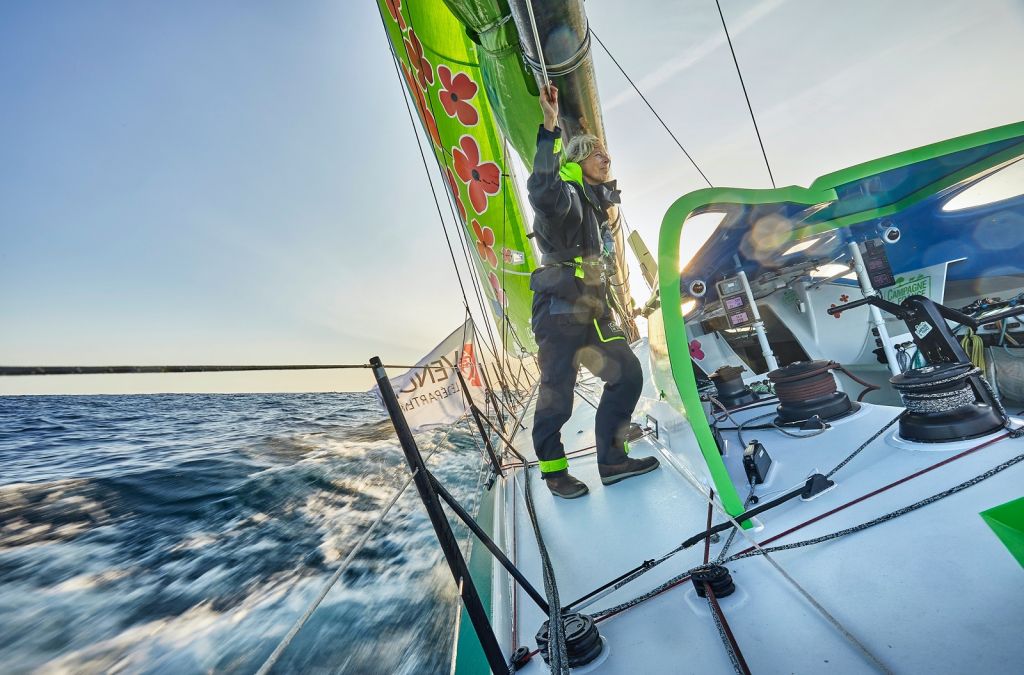 Miranda Merron and Campagne de France © Bertrand Duquenne Photography
Miranda Merron and Campagne de France © Bertrand Duquenne Photography
Since acquiring the boat she and Mabire raced in last year’s Transat Jacques Vabre in order to qualify for the Vendée Globe and have spent much time this year making the use of lockdown doing what they do best – meticulously sorting out the boat, although this has come at the expense of sea time. “Everything has had to be serviced,” Merron continues. “We had the keel out over the winter and the rams, hydrogenerators and rig were serviced. We have really good sails, which Halvard developed with Remi Aubron from All Purpose - they did a really good job on getting the sails right - and on budget!”
The rig refit has included adding a second fractional halyard so that she can have two fractional gennakers - the favoured Southern Ocean sails – hoisted simultaneously (with one furled). “That way I can switch between the two,” she explains. “It is something we have taken from the set-up on our Class40. It also means that if I break the bowsprit, I still have a reaching sail.”
In terms of her personal preparation for the race she, like all of the skippers, had to go on an advanced medical course and has been exercising to build ‘long, endurance muscles’ working with a former French rowing champion. During lock-down they set up a make-shift gym with a borrowed rowing machine, a climbing rope and weights made from keel lead and ball bearings. Plus she was taking part in fellow Royal & Sun Alliance crew member Emma Westmacott’s core strength classes on line, every breakfast time.
As to her objectives, first and foremost is getting to the finish. “That would be pretty significant I think, and I have two reference times for the boat, one of which was 90 days, which is quite quick...”
She is looking forward to racing boats of a similar vintage – although many of the ‘class of 2008’ boats are still being campaigned with reasonable budgets and she sees her competition more as being Pip Hare on Medallia, Alexia Barrier on TSE - 4MYPLANET and Finland’s Ari Hussela, whom she knows from the Class40 on Stark, a boat she also knows well as it was formerly Dee Caffari’s Aviva. “They are all good sailors, no matter what they are racing. No one is out there to cruise around the planet. Everyone is there to try and get ahead of the next boat.”
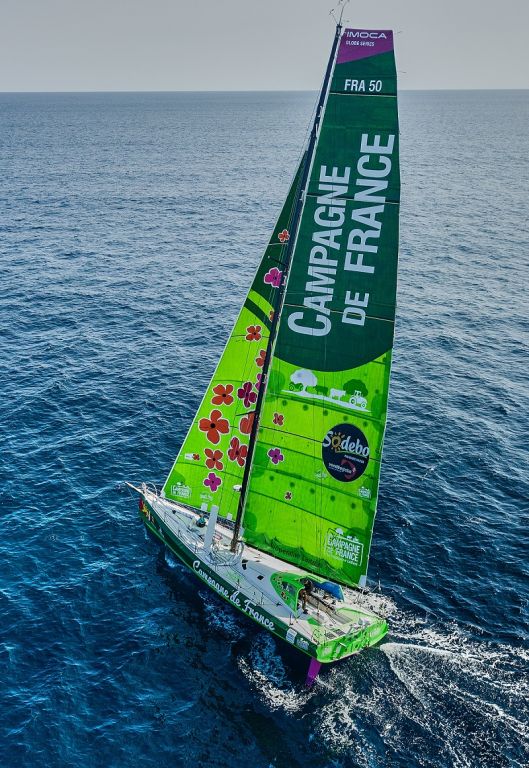 Campagne de France © Yvan Zedda Photography
Campagne de France © Yvan Zedda Photography
While today Merron is hugely experienced and can look after most aspects of the boat, she acknowledges that she still has areas of weakness: “I hope I have no issues with hydraulics or electrics or electronics, because those are not my forte.”
As to the strong female turn-out for this race – six of the 33 competitors (following zero in the last race and one only in the two before that), she says: “I think it is very good but I leave people to make their own conclusion.” In other words, there should be a lot more... However she was delighted by the results from the Défi Azimut, the final Vendée Globe warm-up race where in a fleet of 17, places two to four were taken by female skippers - Sam Davies, Isabelle Joschke and Clarisse Cremer – ahead of strong male competition. “It was good conditions, but it was the same for everyone. Sailing is one of the chief sports where women can compete on an equal footing and there is no reason why they shouldn’t. May all six finish.”

